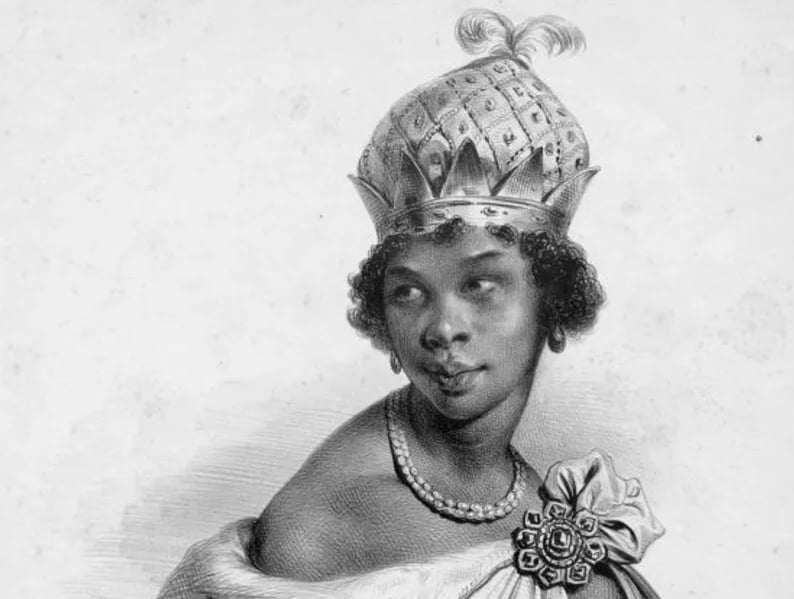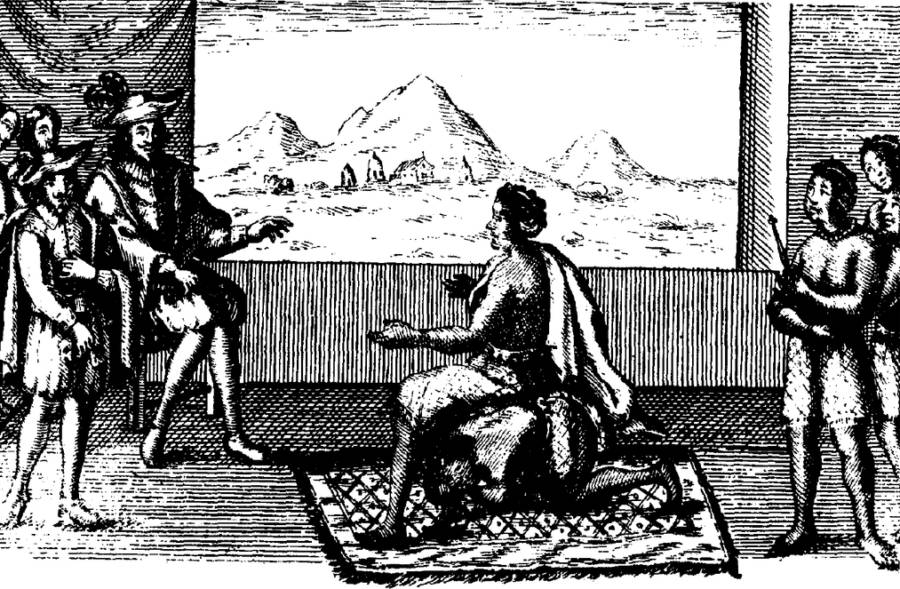Female Warriors: Ana Nzinga

Wikimedia CommonsAn illustration of Queen Nzinga by François Villain, 1800.
Born to the King of Ndongo, one-half of Angola’s divided nation in the late 1500s, Ana Nzinga was destined for greatness.
During the time she was born and throughout her life, Portuguese missionaries used Angola as a target for their slave trade. The king of Ndongo and the Portuguese worked together at first on the slave trade with the condition that they spared the King’s people.
However, once the King died the Portuguese saw no reason to uphold their end of the bargain. The Portuguese threw the royal son in jail and took control of the kingdom. Nzinga sought a meeting with the Portuguese governor to discuss her brother’s capture and father’s betrayal.

Wikimedia CommonsNzinga negotiating the release of her brother from the Portuguese.
She went to the Portuguese governor’s office and demanded her brother’s freedom. She asked too that he release her people from slavery. As the story goes, the governor refused to give Nzinga a chair. Nzinga then told a servant to get down on all fours and she used him as a chair during her negotiations with the governor to show that they were on the same level.
Once negotiations were done, she slit the throat of her servant in front of the governor to show him exactly who they were dealing with. The Portuguese promptly released her brother.
A short time later, her brother and her nephew died and she became Queen Nzinga of Ndongo in 1624. Many sought to oppose her as they didn’t like the idea of a female monarch. Consequently, for a period of time, she had to leave the country.
She used her sister as a spy to keep her abreast on what was happening back at home. By 1629, she established a colony within the region, Matamba, from which she continued her battle against the Portuguese. She was able to cut off the slave trade routes by force and created a suitable method of trade and commerce in the area.
The Portuguese ended up waving the white flag by 1656 and for the last decade of her life, and for several years afterward, Queen Nzinga’s people lived free from European colonialism.





